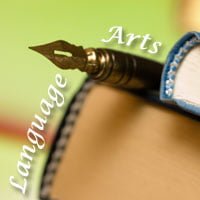Free shipping on USA orders over $129!


“You mean I don’t have to teach English grammar all year long in every grade?” Esther was astonished.
“You’re already teaching the correct way to use words every time you have the children read or write or tell or listen. ‘Grammar’ just means the set of rules for speaking and writing a language.” Beth smiled. “Think of it this way: Let’s say you wanted to learn how to play chess. Your household was full of chess players already, so you had ample opportunity to watch them play and try your hand at playing too. Would you learn how to play correctly?”
“I would think so. I might need a little coaching now and then, but I would pick up a lot on my own,” said Esther.
“Exactly,” replied Beth. “Now, if I asked you to recite all the rules of chess, you may not be able to do that right away. You could probably come up with many of the rules just based on your own observations and experience. But if I insisted that you formally study the rules, it wouldn’t take you very long to learn them, especially because you were so familiar with chess anyway.”
“That’s true,” Esther agreed.
“It’s the same with English. Your children are learning the proper way to use that language every day, by hearing and reading, telling and writing. You have to coach them sometimes on proper use, but they’re picking up a lot,” Beth explained. “Along the way, you will want them to formally study the rules, but it’s not going to take them twelve years. So use the early grades to let them get familiar with the language in all the ways it’s used around them, and save the formal studies of grammar for when they’re older.”
Teaching English Grammar
Those who follow the Charlotte Mason approach to language arts know that Charlotte’s methods don’t always follow along traditional lines. Yet her approach is highly effective and makes so much sense!
In this last post in our series on Language Arts the Charlotte Mason Way, let’s talk a little about her approach to English grammar.
Grades 1–3: As you probably surmised from the little introductory story above, Charlotte did not recommend that we teach parts of speech and rules of the English language during the younger grades. Those are the years to lay the foundation of good English usage in conversations, narrations, copywork, and great books.
She encouraged us to begin gently, when the child was eight or nine, by teaching the parts of a simple sentence: the subject and what is said about the subject.
Grades 4–6: In these grades Charlotte introduced the parts of speech, beginning with simple two-word sentences to teach the concept of verbs (Mary sings, Auntie knits, Henry runs).
She didn’t give a lot of particulars about teaching the parts of speech, because she basically used a traditional English Grammar textbook to teach this subject. She then incorporated selections from good living books to reinforce and apply what the students had learned. For example, she might give a stanza from a Christina Rossetti poem and ask the students to parse (identify the parts of speech) and analyze (identify what job each is doing in the sentence) the words she had italicized in that stanza.
She also included some word studies in her grammar lessons, teaching such things as prefixes, suffixes, synonyms, antonyms, and homonyms.
Charlotte stated that “by twelve, they should have a fair knowledge of English grammar” (Vol. 3, p. 235). I assume that from that age on, she merely held them accountable for what they had learned and continued to apply their knowledge of English grammar in their studies.
Our job, as teachers and parents, is to let go of our preconceived notions that we must teach the rules of English every year, all year long. We don’t have to if we follow Charlotte’s wonderful approach.
Language Arts Handbook
We hope this series on language arts has been helpful to you. If you would like more practical tips, complete descriptions, and personal reassurance, take a look at Hearing and Reading, Telling and Writing: A Charlotte Mason Language Arts Handbook. This great resource lays out Charlotte’s language arts program with all the how-to’s and explanations that she gave. It’s a convenient tool that you’ll refer to again and again to gain confidence that you’ve got this language arts thing covered the Charlotte Mason way.
